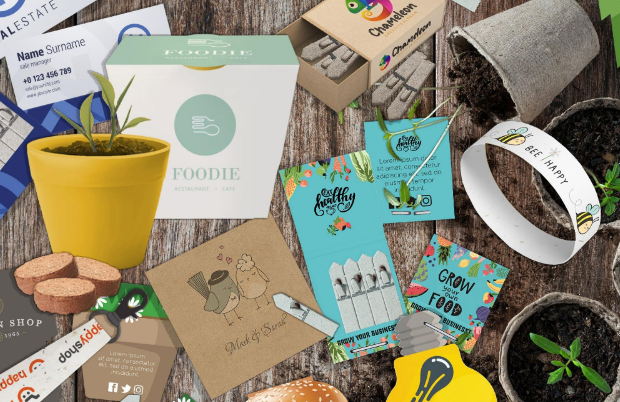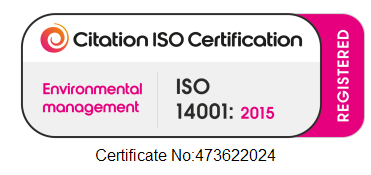Sustainable Promotional Products: What to Look for When Selecting Eco-Friendly Options
12 June 2023

Every business is looking for sustainable promotional products to align their brand with eco-friendly values. However, with numerous options available, it can be challenging to navigate the sea of choices. So let's explore the key factors to consider when selecting eco-friendly branded merchandise, giving you the tools to make informed and sustainable decisions for your brand.
Material Selection
One main aspects to evaluate when choosing sustainable promotional products are the materials used. Look for products made from recycled or upcycled materials such as recycled plastics, reclaimed wood, or organic textiles. These materials reduce the demand for virgin resources and contribute to waste reduction. Additionally, consider products derived from renewable resources like bamboo or cork, which are fast-growing and easily replenished. Another approach is to look for natural materials (paper, wood, cotton jute) which are biodegradable or even compostable. By opting for materials that minimize environmental impact, you can convey your commitment to sustainability. You may have to print, or indicate somehow, on the product its biodegradable or recycled nature because it is not always obvious. Our goal is to get recognition from the customer that the product is eco.
Production Processes
The manufacturing processes employed in creating promotional products can significantly impact their environmental footprint. Seek products that are produced using energy-efficient methods, such as those powered by renewable energy sources. Additionally, look for certifications such as Fair Trade, which ensures fair wages and safe working conditions for employees. Avoid products that involve harmful chemicals or processes that contribute to pollution. This is often a criticism made of cotton – so look for organic (GOTS) cotton to avoid this. By choosing items produced through sustainable and ethical practices, you support responsible manufacturing while sending a powerful message about your brand's values.
Durability and Longevity
Promotional products that have a short lifespan contribute to unnecessary waste. Prioritize items that are durable and built to last. Consider the quality of materials, construction, and overall product design. A well-made product will not only showcase your brand effectively but also reduce the need for frequent replacements. Items like reusable water bottles, tote bags, or notebooks made from sustainable materials can provide long-term value to recipients while minimizing environmental impact.
Functionality and Relevance
This should be true of all branded merchandise but sustainable promotional products should be functional and relevant to your target audience. Choose items that align with your brand's mission and resonate with your customers' needs. For example, eco-friendly phone chargers or solar-powered gadgets appeal to tech-savvy individuals who value sustainability. By offering useful and purposeful products, you increase the likelihood of them being used, thereby amplifying your brand exposure whilst promoting sustainable living.
As businesses strive to adopt more sustainable practices, selecting eco-friendly promotional products is a meaningful step towards minimizing environmental impact. By considering factors such as material selection, production processes, durability, and functionality, you can choose products that align with your brand values while promoting a greener future. Make a conscious choice to leave a positive impression on both your customers and the planet.
Share this blog:

T he Changing Cost of Eco-Friendly Products: Is There Still a Premium? SUMMARY • Eco-friendly promotional products used to be 25-30% more expensive • In recent years the volume of eco friendly products has grown substantially • So, the price differences have eroded • Eco and non-eco are now comparable in price – the product features and embellishments are more important to the price, than the eco status In recent years, the market for eco-friendly promotional products has undergone significant changes. Hi, I'm David from Pavilion, and I'm here to explore just how much the pricing paradigm has shifted for products branded as "eco" compared to their standard counterparts. If you'd asked me this question five years ago, I would have estimated a premium of 20-30% for eco products. However, the last half-decade has brought some surprising developments. Eco Products Go Mainstream Eco products have become increasingly mainstream, leading to higher volumes and reduced manufacturing costs. To understand how this has affected pricing, I conducted a survey comparing various popular products. Comparative Survey of Eco Versus Standard Products **Notebooks**: I started with notebooks, considering a batch of 100 with a one-color print. Comparing a standard hard-backed notebook made from PU (polyurethane) to a recycled PU version revealed minimal price differences—around 5%. While eco options like recycled leather or apple peel versions are pricier (£12-14 each), they compare more to luxury brands like Moleskine.




